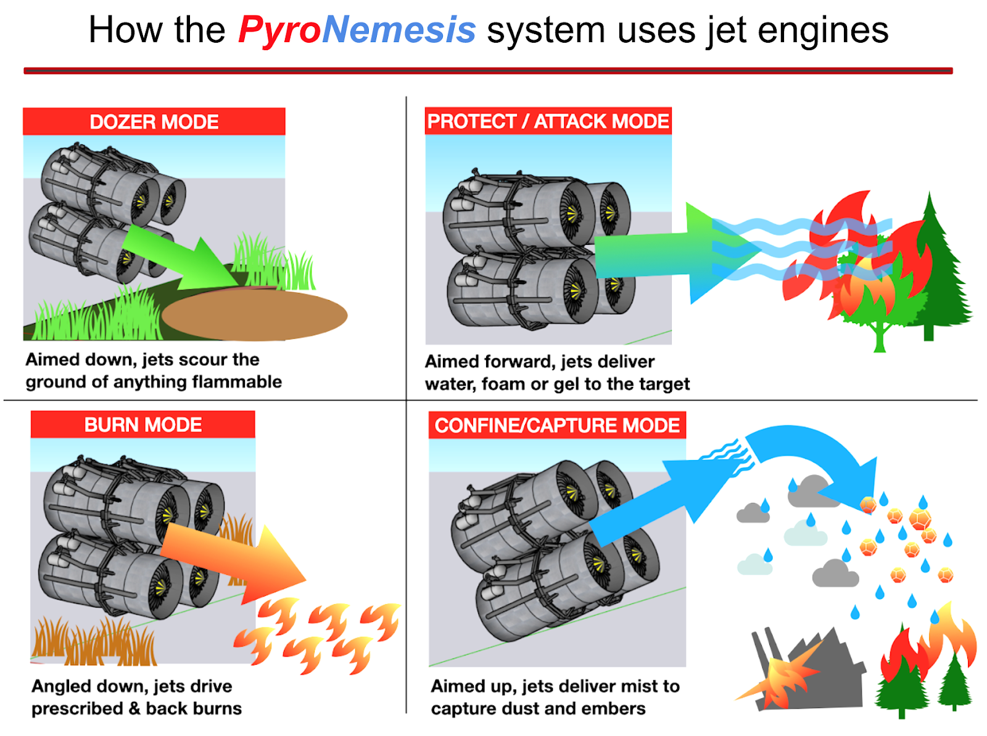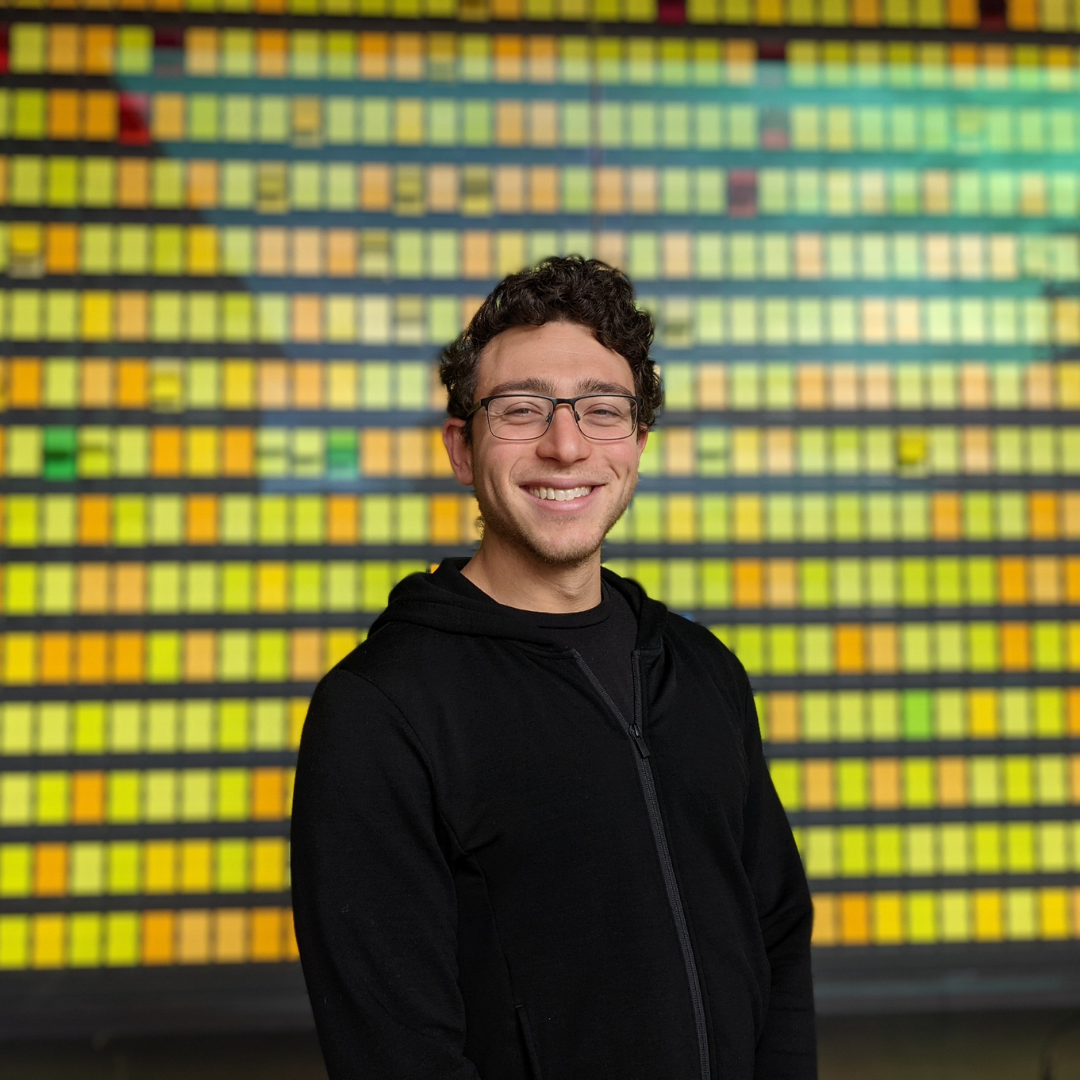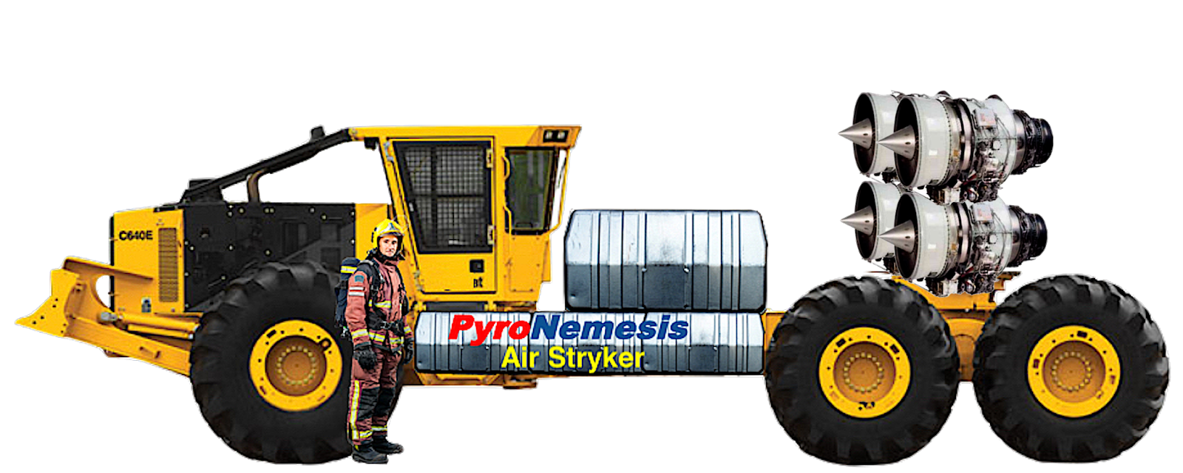Wildfires are not only devastating to communities and habitats, but also to economies. The need for powerful new firefighting capabilities is higher than it’s ever been, and growing. The urgency to bring more technology to this market has never been stronger.
PyroNemesis, a Boulder-based startup, has introduced a modern and substantial new capability to directly attack wildfire, using unique multi-capability technology. PyroNemesis is modifying technology developed and used in Hollywood movies, and putting it in the hands of firefighters, who, with the help of Pyronemesis, will finally be able to control wind, rain and humidity. PyroNemesis technology is essentially a Category 5 hurricane on wheels, putting 250 mile per hour winds and massive rains at firefighter’s disposal.
Drawing on 30 years of experience as a pyrotechnician for stars including Tom Cruise, Steve Wolf,
a frequent fire expert on The Discovery Channel, invented a new technology for wildfire suppression.
How did you come up with the idea of PyroNemesis?
My background is in special effects and pyrotechnics for films. I’ve worked on movies with Tom Cruise, Robert De Niro, and Tom Hanks, and for directors including James Cameron. I’ve made a lot of fire on movie sets. More importantly, and relevantly, I was also responsible for putting them out.
I was working with director Sydney Pollack on a movie called “The Firm”, where I made a small fire for him. After filming, Pollack came over and he said, “The fire looked great. You don’t have to put it out, but it can’t stay here.” And that gave me the idea that fire and its components could be moved, because fire emanates from physical fuels. If you can move those fuels or remove any of the factors that are necessary for a fire to survive, (fuel, oxygen, heat, and chemical reaction) you can move fire, or extinguish it outright.
What is the idea behind PyroNemesis?
I interviewed hundreds of firefighters, most of whom joked that all they needed to put out a wildfire was the wind to their backs and a good rain. When movie directors need that, they get it, so why, I wondered, shouldn’t firefighters have access to the same or better tools?
I started experimenting with small jet engines as a way to attack fires, to move fuels, and to accelerate controlled burns as a way of creating protective barrier areas. I was looking to build a machine that would attack fire on all of its vulnerable fronts. I found that with the use of powerful air currents and misted chemistries, I could do several things that impacted fire movement.

- PyroNemesis uses strong winds to act as a bulldozer, literally blowing flammable vegetation out of the way, as there are few things that will withstand 250-mile-an-hour winds. In this mode, we’re able to scour the ground and make firebreaks much more quickly than with bulldozers, and with less long-term impact on terrain.
- We can directly attack fires, which involves blowing mist for cooling, and enhanced water for smothering.
- We can protect buildings by enveloping them in the same gels that we use to protect stuntmen who are performing fire stunts. These water-based insulating gels are non-toxic, they’re safe to put on people and buildings, and they provide a high level of insulation due largely to their thermal density. In the short time it takes a fire to race through an area, there’s still water stuck to the side of the building in the form of these gels.
- PyroNemesis tech can drive backfires, which is when a fire is deliberately set in order to burn off the fuels between an occupied area, and the big fire.
- In umbrella mode, PyroNemesis disperses thick mists over a fire that sink down and capture fugitive embers to reduce ember spread. This mode can also capture dust from explosive demolition.
PyroNemesis leverages technology that has been well proven in both aviation and in forestry – and is derivative of the kind of equipment that we use on movie sets for making wind, rain and hurricanes.
How have you thought about impact/impact metrics?
The best metric for impact is relative to what the other tools do and how much they cost per unit of effectiveness, such as cost per linear foot of fireline extinguished, or cost per acre for fire mitigation. For instance, an aerial tanker may do a drop that costs $80,000 for 1,000 linear feet of fire extinguished using roughly 20,000 gallons of fluid. PyroNemesis technology could put out 1,000 feet of fire for about $10,000, (and do so with retardants that are much safer than those currently in use.) Similarly, fire trucks drive down roads spraying water on either side of the roadway, but that’s typically insufficient to stop fire from jumping across the road, because the water doesn’t go far enough to create a large enough gap. PyroNemesis gear can spray fire-killing mists and retardants 600+ feet on either side of the roadway for at-comparable cost, with much greater effectiveness.
Another factor is that our technology allows us to deliver flame retardants to areas that are inaccessible to airplanes and fire trucks. Airplanes can only fly during the day and can’t drop near roads or bodies of water. Fire trucks are largely bound to pavement, so they’ve got to stay on the blacktop and wait for the fire to get to them. PyroNemesis vehicles can deliver retardants, protective gels and mists to places where you can neither drop from an airplane nor access with a fire truck, and can run 24 hours a day.
How are you thinking about getting your technology into the market?
Firefighting is an industry that has typically been very slow to change and to adopt new technology. But I’ve always been inspired by something Steve Jobs said when he advised that you don’t have to go up against existing technology, you just have to do something that makes it obsolete. In this case, we’re not planning to eclipse current methods, but to fill in some huge gaps that current methods and tools don’t address.
There are companies like Chubb, AIG and FM Global that have very aggressive wildfire mitigation strategies for their clients. If a wildfire is approaching a client’s $30M home, and an adjuster is about to have to write a huge check for the loss of that home, and instead they could pay PyroNemesis $200,000 to fully protect that property, that should be an easy decision to make. By contrast, adopting a new technology for use on a statewide or federal basis is a multi-committee decision that requires much more time. Partnering with companies that already have relationships and contracts with these agencies is another strategy I’m using to gain traction.
Support has been really great. The concept has been very well received by folks at CAL FIRE, U.S. Forestry and by fire departments around the world – most ask, “Why didn’t someone think of this sooner? And how quickly can we get a fleet of them out here?” But I don’t anticipate selling machines. This is a service-model business, as the complexity of operating and maintaining the equipment is beyond the capability or desire of most fire departments.
PyroNemesis is clearly working on fire mitigation. What about fire avoidance?
We’re working with several supercomputer teams to model the effectiveness of this technology. We’re exploring how to strategically deploy our technology at very specific locations and times in order to keep a fire from entering a particular location, such as a populated area in the midst of a wilderness area. And, If we can’t prevent fire’s entry into an area, we want to delay it, to increase the time people have to evacuate. If we can give people hours to evacuate, rather than minutes, lives will certainly be saved. And once evacuation orders are issued and evacuation routes are defined, we can make that a safer corridor by treating the wilderness on either side of the roads, to keep fire off the road.
Are there other applications for using PyroNemesis technology?
Wildfire suppression is just one use of the technology. After a fire, the ground is hard and doesn’t absorb water, which leads to mudslides and flooding. To fix this, you have to introduce chemistries to the soil to make it conducive to absorbing water and supporting new growth. Our technology can help by quickly applying large quantities of reforestation chemicals, soil enhancers, and hydrophilic agents that help draw water to the soil.
Generally, any problem that can be solved with a large, aerosolized distribution of chemistries is a good match for this technology. So, if there is an oil spill and you need to capture and reclaim that oil, we can distribute materials like imbiber beads. We can apply agents for neutralizing pathogens, or suppressing dust. We can even use the cooling effect of our long-range highly directional misting systems to control the flow of lava from volcanoes, turning lava flow into solid walls that cause lava to flow around them.
Outlook
PyroNemesis is focusing on putting out and controlling the spread of existing fires, and applying long-term retardants to make the next fire season easier to manage. Other enterprises in the industry are looking at software solutions – modeling where the fire is going to go, measuring wind, predicting fire movement, calculating fuel loads, etc., and that’s important, but no amount of data will put out a raging fire. It takes heavy duty physics driven hardware to put out fires. We’re going to get fires whether we predict them or not. The practical question is how are you going to handle fire when it happens? This is the aspect of innovation PyroNemesis is tackling.
About The Author

Daniel currently works at Lawrence Livermore National Laboratory. His original assignment was to maintain and update facility safety documentation for all facilities on-site, and perform risk analysis. Over time, his role has expanded to leading continuous improvement efforts through product management.
Concurrently, Daniel volunteers with Techstars, helping organize startup weekends, and with the American Institute of Chemical Engineers, organizing events on the local and national levels of the organization. He also volunteers with One World, and previously with Powerhouse Ventures, to source and screen startups for potential investment.
Daniel holds a BS in Chemical Engineering from UC Davis, and recently completed coursework in energy innovation from Stanford. His passion is at the intersection of sustainability, innovation, and business.

